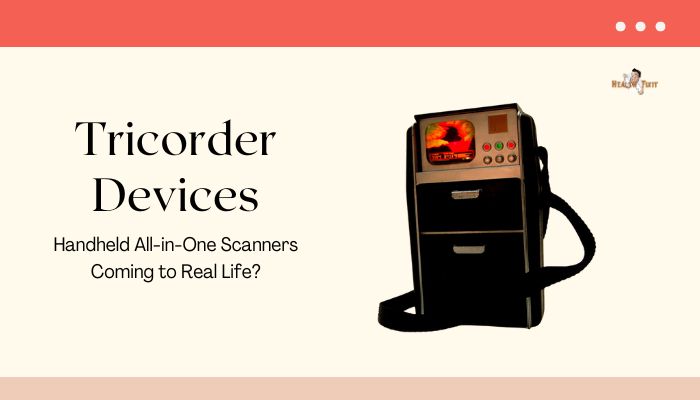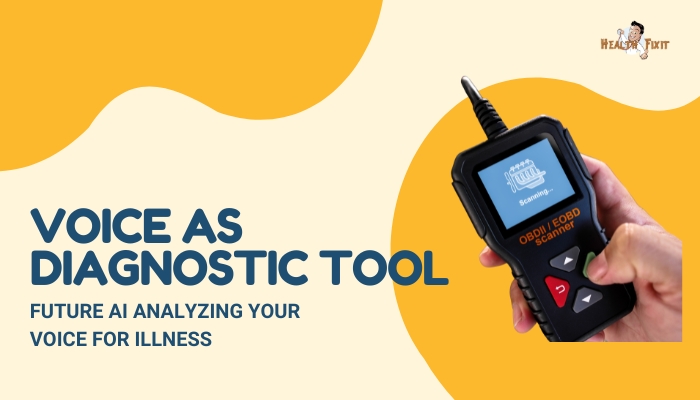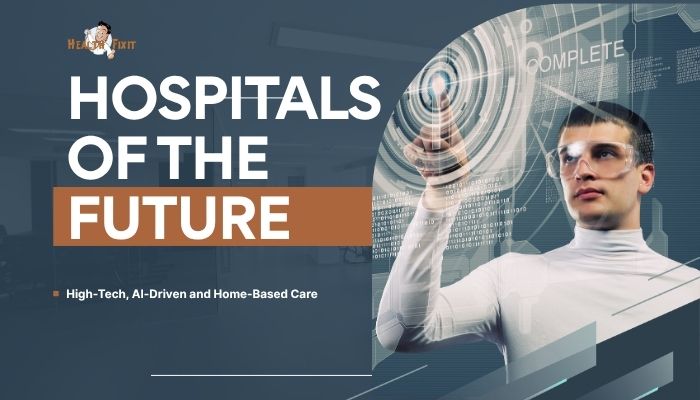Introduction
Fans of Star Trek’s futuristic “tricorder” recall a small handheld scanner that provided immediate, detailed medical diagnostics on the spot. Decades later,
engineers, medical device makers, and AI developers are racing to create real-life equivalents—compact gadgets that measure vital signs
, scan for illnesses, and wirelessly transmit results for quick analysis. These emerging tricorder-like devices may profoundly transform patient care
delivering fast, noninvasive readings in clinics, at home, and even remote locations. Could we soon see these all-in-one scanners become standard medical equipment?
This article surveys the technology powering modern tricorder prototypes, their potential impacts, and the roadblocks to broad adoption.
What Is a “Tricorder” in Modern Terms?
In essence, a real-world tricorder would be a portable, multifunctional diagnostic device that can quickly measure various biomarkers—like heart rate,
blood pressure, oxygen saturation, and more advanced parameters such as EKG, lung sounds, or scanning for infections. Ideally, it would:
- Integrate Multiple Sensors: For vitals (ECG, SpO2), ultrasound capabilities, or even lab-on-a-chip modules analyzing blood or saliva samples.
- Analyze Data Onboard: Possibly applying AI algorithms to interpret results, providing immediate suggestions or diagnoses.
- Communicate Wirelessly: Linking with EHR systems, telemedicine platforms, or specialty consultants.
Historical Inspiration
The original inspiration traces back to Star Trek, where the fictional tricorder scanned a patient’s body, diagnosing injuries or diseases within seconds.
Over time, real engineers have tried to replicate that speed and breadth of diagnostics in a single compact device, spurred on by XPRIZE competitions and other innovation challenges.
Current Technologies Driving Tricorder Development
Sensor Miniaturization
In recent years, a surge in microelectromechanical systems (MEMS) sensors, optical sensors, and microfluidic lab-on-a-chip designs has enabled vital sign measurements in devices no bigger than a smartphone. Examples include:
- Pulse oximetry using reflectance and transmission of light through the fingertip.
- Electrochemical biosensors to detect glucose or other metabolites from a drop of blood.
- Ultrasound on a chip, delivering basic imaging from a palm-sized probe.
AI-Powered Analysis
A truly multi-sensor device demands automated integration of raw signals, calling for machine learning to interpret EKG patterns, heart-lung sounds, or subtle chemical signals. Real-time AI modules can produce likely diagnoses or flag abnormal readings before the user sees them.
Battery and Wireless Tech
High-capacity but compact batteries plus low-power chipsets let devices run multiple sensors for hours. Wireless connectivity—Bluetooth, Wi-Fi, or cellular—pushes data to cloud-based platforms or telemedicine apps, bridging remote or in-home usage with professional oversight.
Potential Healthcare Impacts
Rapid Diagnosis in Remote Areas
In resource-limited settings where hospital labs are scarce, a “tricorder” can check vitals, test for malaria or COVID-19 antigens, or identify pregnancy complications. This fosters faster decisions and can drastically reduce time-to-treatment for critical conditions.
Home Health Monitoring
Chronic disease patients—heart failure, diabetes, COPD—might rely on daily scans from their own device, avoiding frequent clinic visits. Physicians can track stable or worsening status in real time. Such approaches also reduce hospital readmissions, if anomalies are caught early.
Emergency and Disaster Relief
First responders or field clinics could swiftly triage casualties, scanning for internal bleeding or arrhythmias. The device’s portable nature ensures quick action, especially in disaster zones with minimal infrastructure.
Real-World Examples and Trials
XPRIZE Tricorder Challenge
Launched in 2012, the Qualcomm Tricorder XPRIZE spurred teams to develop a consumer-friendly mobile device diagnosing multiple conditions (e.g., pneumonia, diabetes) and capturing real-time vitals.
Though no single team produced a fully holistic solution, finalists advanced the technology significantly, with spinoffs reaching the market.
Handheld Ultrasound
Companies like Butterfly Network produce smartphone-compatible ultrasound probes, letting clinicians and paramedics do quick imaging anywhere. This partial approach hints at adding other sensors to evolve a more comprehensive scanning device.
AI-Driven Kiosks
Some telemedicine startups combine kiosk-based hardware (camera, stethoscope, basic lab sensors) with AI triage to facilitate an immediate read of vital signs and simple labs. Although not yet as small or integrated as a tricorder, they reflect the same multi-sensor concept.
Challenges to Implementation
Regulatory Approval
Any device diagnosing multiple conditions with minimal user input likely faces intense scrutiny from bodies like the FDA. They must prove accuracy, safety, and reliability across diverse patient populations and conditions.
Data Management and Security
Tricorders produce copious health data. Ensuring secure storage and patient privacy is crucial. Standardizing data formats for interoperability with EHR systems also remains a hurdle.
Complexity vs. Usability
While advanced sensor combos can glean immense data, user interfaces must remain simple—especially for laypersons. Overly complex devices risk confusion or misuse. Achieving intuitive design is vital for broad adoption.
Cost and Accessibility
Cutting-edge sensors, AI engines, and compact form factors might raise device cost. Scaling up production, open-sourcing technologies, or adopting philanthropic or insurance support can expand availability globally.
The Future of “Holodeck Medicine” at Home
Integration with Telemedicine
As telehealth flourishes, a tricorder-like device at home can send real-time vitals or test results to remote doctors. Combined with video consults, it might solve many routine visits or accelerate referrals to specialists when something is off.
Personalized Health Insights
With AI analyzing daily or weekly scans, patients gain immediate feedback on lifestyle changes—detecting early patterns of hypertensive surges, prediabetes, or even mental stress. Instead of episodic checkups, health monitoring becomes continuous and proactive.
Trials and Pharmacovigilance
Pharmaceutical researchers may incorporate portable scanning devices into clinical trials, capturing real-world outcomes. Post-market, patients can self-report side effects with objective data, refining drug safety profiles.
Practical Tips for Early Adopters
- Assess Reliability: Check if the device is FDA or CE approved for certain diagnostics. Over-promises or insufficiently tested gadgets do exist.
- Involve Providers: If you plan to use such a device at home, ensure your physician can interpret or integrate the data.
- Don’t Self-Diagnose: Even with AI feedback, consult professionals for final decisions on medication or major health steps.
- Monitor Privacy: Confirm data encryption and compliance with relevant health data regulations, especially if uploading data to cloud-based apps.
Conclusion
The dream of a “tricorder”—a handheld all-in-one medical scanner—once seemed purely science fiction, but advances in sensor miniaturization,
AI analysis, and telemedicine are rapidly turning concept into reality. While fully integrated solutions remain in development,
partial versions (from portable ultrasound to multi-sensor smartphone add-ons) already push medicine toward more precise,
convenient, and earlier detection of health problems. As R&D continues, these devices may become as indispensable as stethoscopes, delivering more autonomy to patients,
optimizing diagnosis for clinicians, and bridging gaps in remote healthcare settings. The next decade could see widespread use of tricorder-like tools,
fulfilling a sci-fi prophecy that hand-held technology can truly revolutionize how we track and treat illness.
References
- Topol EJ. The Creative Destruction of Medicine: How the Digital Revolution Will Create Better Health Care. Basic Books; 2013.
- Pattichis CS, et al. Mobile health: the potential for disease management. Healthc Inform Res. 2012;18(3):156–164.
- Qiu S, et al. Wearable medical sensor systems: Current and future trends. Sensors. 2020;20(16):4691.
- XPRIZE. Qualcomm Tricorder XPRIZE. Accessed 2023.
- Li J, et al. Integration of AI and sensor technologies in handheld medical devices. Comput Biol Med. 2021;132:104332.
- Schwalbe N, Wahl B. Artificial intelligence and the future of global health. Lancet. 2020;395(10236):1579–1586.
- Peckham D, Spence D. Review: The future of telemedicine in remote and rural settings. Telemed J E Health. 2021;27(3):201–207.
- Chen M, Cheng X. Wireless sensing and big data analytics for telehealth. IEEE Netw. 2020;34(4):256–263.
- Chen K, Wang C, Chang L, et al. Efficacy of AI-supported smartphone-based triage. NPJ Digit Med. 2022;5:80.
- Lepies L, Tschimben I, Westerhoff M. Sensor fusion and context awareness in next-generation mobile healthcare. Int J Ubiquitous Comput. 2021;17(4):113–127.






